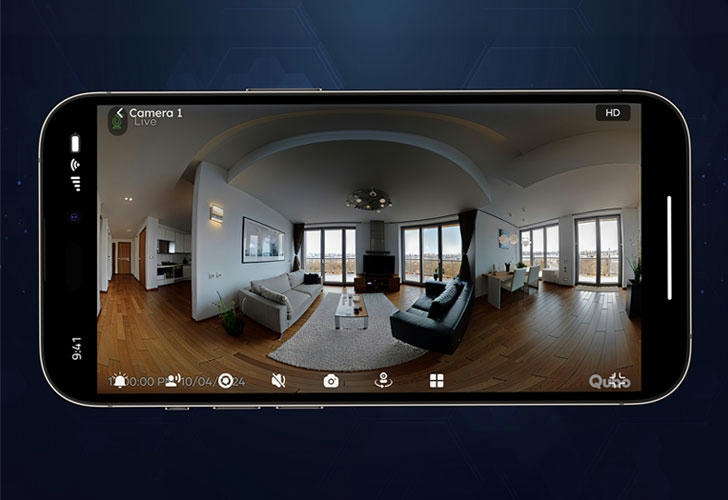Home Security Cameras Made Simple: A Friendly Guide
Thinking about adding a home security camera but overwhelmed by all the tech jargon and options? You’re not alone. Installing a camera can feel like rocket science—wires everywhere, sensors, apps, subscriptions. But it doesn’t have to be that complicated. In this friendly guide, we’ll break down what you need to know to choose, place, and use a home security camera that fits your lifestyle and keeps your peace of mind intact.

1. Why Consider a Home Security Camera?
Installing a camera is more than just “big brother” watching you. It can:
- Deter intruders: Visible cameras make burglars think twice.
- Provide evidence: High‑quality footage can help police investigations.
- Keep an eye on deliveries: Never miss a package again.
- Monitor pets and kids: Check in on Fido or see when the kids get home.
Whether you live in a busy neighborhood or a quiet cul‑de‑sac, a camera adds an extra layer of security—and a big dose of convenience.
2. Types of Home Security Cameras
There’s no one‑size‑fits‑all. Here are the main categories:
Indoor Cameras
Compact and discreet, they clip onto shelves or hang from ceilings. Great for nurseries, living rooms, or home offices.
Outdoor Cameras
Built tough to withstand weather—a bullet‑style camera near your front door or a dome camera under the eaves keeps watch on the perimeter.
Pan‑Tilt‑Zoom (PTZ) Cameras
You can swivel and zoom remotely to follow motion across a wide area. Ideal for driveways, backyards, or larger rooms.
Battery‑Powered Wireless Cameras
No wiring required—pop in batteries or recharge periodically. Perfect for renters or quick installations.
Video Doorbell Cameras
Combines a doorbell and camera in one. See and talk to visitors right from your phone, whether you’re on the couch or at the office.
3. Key Features to Look For
With so many specs to compare, focus on these essentials:
- Resolution: 1080p HD is the sweet spot. Sharp enough for faces and license plates without gobbling bandwidth.
- Night Vision: Infrared LEDs or color night vision help you see clearly in the dark.
- Motion Detection: Adjustable sensitivity and activity zones reduce false alerts from passing cars or rustling leaves.
- Two‑Way Audio: A built‑in microphone and speaker let you speak through the camera—say hi to the dog or warn off an unexpected visitor.
- Cloud vs. Local Storage: Cloud plans offer off‑site backup; local storage (SD card) avoids monthly fees but can be stolen with the camera.
- App Support: A user‑friendly app with real‑time alerts and easy playback makes a huge difference in day‑to‑day use.
4. Best Camera Placement Tips
Placement is everything. A few pointers:
- Front Door: Aim the camera at the entry path, low enough to capture faces, high enough to stay out of reach.
- Backyard/Garage: Mount under eaves, covering the back door and driveway. Angle downward to avoid glaring sun.
- Living Room: Clip an indoor camera on a shelf, pointing toward main entry points.
- Nursery or Playroom: Position above eye level for wide coverage without easy tampering.
Keep cameras sheltered from rain and direct sunlight, and test angles on your phone before final installation.
5. Installation and Setup
- Mounting: Use wall anchors or outdoor‑rated screws. Follow the camera’s template for hole placement.
- Power: Plug into a nearby outlet or use battery packs. Some models support Power over Ethernet (PoE) for both power and data over one cable.
- Connectivity: Wi‑Fi is common—check that your router’s signal reaches the camera; otherwise, consider a Wi‑Fi extender.
- App Configuration: Download the manufacturer’s app, create an account, and scan the camera’s QR code. Follow on‑screen steps to connect to your network.
- Adjust Settings: Fine‑tune motion zones, sensitivity, notification schedules, and recording quality.
6. Privacy and Data Security
Your camera captures more than just burglars—it sees your daily life. Protect your footage:
- Change Default Passwords: Use strong, unique passwords for your camera and Wi‑Fi network.
- Enable Two‑Factor Authentication: If your app supports it, add an extra layer of login security.
- Keep Firmware Updated: Manufacturers release patches that fix vulnerabilities.
- Review Sharing Options: Only share footage with trusted family members or law enforcement when needed.
7. Maintenance and Monitoring Tips
- Monthly Check‑Up: Wipe lenses, check mounts, and test the live feed.
- Battery Health: For wireless cameras, monitor battery levels and recharge as recommended.
- Storage Management: Clear out old clips or expand your SD card/cloud plan if you’re running out of space.
- Test Alerts: Trigger a motion event to ensure you receive push notifications and email alerts properly.
Recommended Products
To streamline your home security setup, consider adding:
- A 1080p indoor dome camera with two‑way audio
- A weatherproof outdoor bullet camera with infrared night vision
- A pan‑tilt‑zoom (PTZ) camera for wide‑area monitoring
- A wireless battery‑powered camera for flexible placement
- A video doorbell camera with built‑in chime and smartphone alerts
- An outdoor mounting kit with adjustable brackets
- A PoE injector and cable for simplified wired installations
- A Wi‑Fi range extender to boost signal strength
- A 16 GB microSD card for local video storage
- A subscription plan for cloud backup and advanced AI alerts
With the right camera and setup, you’ll enjoy the peace of mind that comes from knowing your home is always in view—whether you’re on vacation, at work, or just kicking back on the couch. Happy securing!
